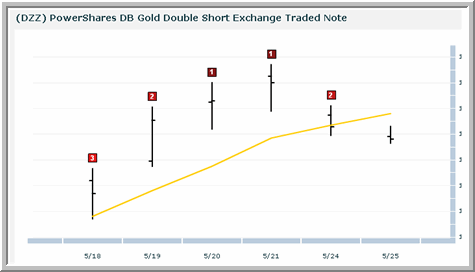Ultimate PowerRatings Trading Report: Quantified Strategies for Down Markets
Whether or not severely oversold conditions will result in a near-term bounce, PowerRatings continue to provide a framework for short term traders when volatility and emotion run high.
For traders who are quantitatively based and let the data drive their trading decisions, times like these are far from easy. But by eliminating the guesswork and the anecdotal from the decision-making process, traders who rely on backtested, data-based trading strategies like PowerRatings are not only often the most successful traders in the long run, but those best equipped to deal with the cycles from raging bull to panic bear in a professional fashion, rather than an emotional one.
Stocks
If you are trading stocks in this environment and looking toward the short side, remember that Stock PowerRatings can help you identify which stocks have advanced to levels from which they have historically reversed.
For example, our lowest rated stocks – those stocks with Stock PowerRatings of 1 – have tended to lose money in the short term. For traders, this means that selling short stocks with Stock PowerRatings of 1 should be among those that short term traders looking to sell short include on their watch lists.
The temptation for many traders is to sell short stocks after they have already moved lower. However for traders looking for a quantified approach to selling short that takes into account more than a decade of research into how stocks actually behave in the short term, Stock PowerRatings may be a better option.
Learn more about trading stocks in bull markets and bear markets using Stock PowerRatings. Click here.
Exchange-traded Funds (ETFs)
In the same way that traders can use PowerRatings to spot the best stocks to sell short, ETF PowerRatings and Leveraged ETF PowerRatings are a powerful tool for traders looking to sell short exchange-traded funds.

Above: An example of a low-rated exchange-traded fund, here the ^DZZ^, reversing lower shortly after a downgrade to 1.
The process is very similar: by sticking to only those exchange-traded funds that have earned ETF or Leveraged ETF PowerRatings of 2 or 1, traders who sell short using PowerRatings will have quantified edges on their side. These edges have shown that 2-rated Leveraged ETFs, for example, have made significant short term gains less than 25% of the time since inception. 1-rated Leveraged ETFs have performed even worse, making gains less than 20% of the time.
Traders can take advantage of this tendency by focusing on those ETFs and Leveraged ETFs that have earned the lowest PowerRatings as potential short selling candidates and leave the rest aside. A 1-rated fund that makes gains less than 20% of the time means that the fund is likely to move lower more than 80% of the time. For traders looking to sell ETFs short in the short term, these are edges, quantified edges, worth taking seriously.
If you’ve been looking for ways to trade ETFs – and especially leveraged ETFs – in the short term, click here to try Ultimate PowerRatings free for a week. The Ultimate PowerRatings free trial includes access to both ETF and Leveraged ETF PowerRatings, as well as access to Stock PowerRatings.
David Penn is Editor in Chief at TradingMarkets.com.
